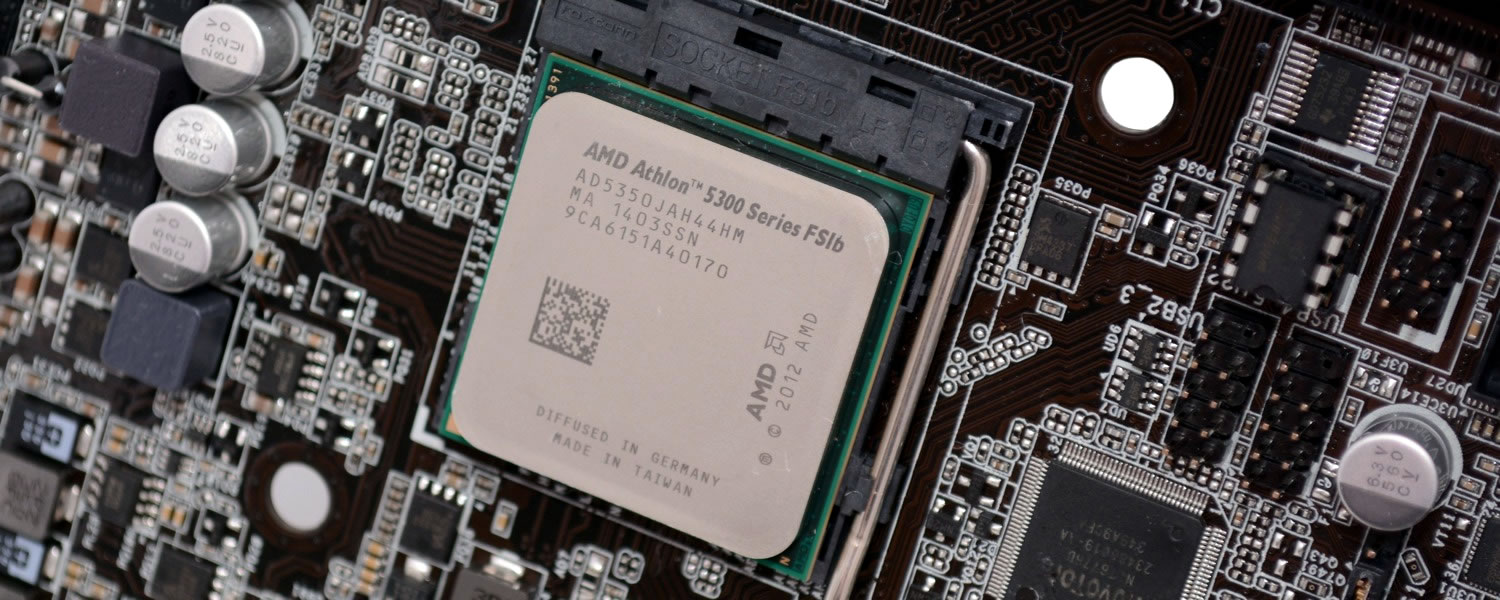Final Word: Kabini vs. Intel Bay Trail-D
Although this review came about because of AMD's new AM1 platform, we also included every other noteworthy budget CPU we could find. We bought almost every CPU in this article and none were provided by Intel. It seems neither company is eager to have their budget offerings reviewed, especially Intel.
That's unfortunate as it can be hard to get our hands on these chips in a timely manner. Unfortunately, I wasn't able to acquire the dual-core model, the Celeron J1800, nor was I able to get the Sempron 2650.
So which is the best buy, AMD's AM1 Kabini APUs or Intel's Bay Trail-D CPUs?
It's a bit of an apples and oranges comparison since one is a socket solution and the other is soldered to the motherboard. At the end of the day, if you're building a desktop PC on the strictest of budgets, both platforms are viable options, let's see why...
The Gigabyte J1900N-D3V motherboard we used to test the Celeron J1900 was pretty cheap at $92 when you consider both the processor and motherboard are included in that price. Alternatively, the Athlon 5350 costs $65 with AM1 motherboards coming in at $35 making AMD's alternative slightly more expensive.
However, AM1 has the plus of being more flexible as the CPU can be upgraded. Performance-wise, the Celeron J1900 and Athlon 5350 are evenly matched. In programs such as Excel 2013, Internet Explorer 10, WinRAR, Adobe After Effects CS6, and Adobe Illustrator CS6 they offer virtually the same performance.
The Celeron J1900 was faster in Adobe Photoshop CS6, while the Athlon 5350 proved to be the better solution in PowerPoint 2013, 7-zip and Adobe InDesign CS6. When it came to encoding, the quad-core Athlon 5350 again managed to get the better of the Celeron J1900, coming out on top in all three test programs.
Anything 3D-related is begging for the Athlon 5350 – the Celeron J1900 simply can't compete here. Where the Celeron J1900 does have an advantage is in its power consumption, which is up to 30% less. Picking between the two seems like a tough choice, but once the dust settled we felt the choice became obvious.
AMD's AM1 platform is the better pick in our opinion. For about the same money you get slightly better performance (as long as multi-threading is well supported) and considering it only consumes around 50 watts, power consumption shouldn't be an issue. Best of all, you should be able to upgrade your CPU later on.
Final Thoughts
While we recommend AMD's AM1 to those hoping to spend as little as possible, it isn't necessarily the best value option out there – especially if you're willing to spend a little more.
At just $50 we have the Celeron G1820, while $70 will buy you the Pentium G3220, and if your budget allows the Core i3-4130 goes for $125.
We didn't include many AMD chips besides the $120 A8-7600, though we are yet to see this APU hit shelves despite being announced in January. In terms of price and performance, it is best compared to the A8-6500 which sells for the same price. Below that, we have the $45 A4-4000, another Richland APU in this review.
As it stands, the FM2+ platform currently only offers the $145 A10-7700K and the $185 A10-7850K.
So starting with the $50 Celeron G1820... is it a better buy than the Athlon 5350? Keep in mind you can purchase LGA1150 H81 boards for as little as $50, so the build cost is the same as the Athlon 5350 with an AM1 board.
In our application tests, the Celeron G1820 was 20% faster than the Athlon 5350 on average. Moreover, it was 63% faster at encoding and even 10% faster in our gaming tests. With that said, the G1820 consumes 45% more power, so it comes down to whether you care more about performance or power consumption.
Given that the extra power scales pretty well with the extra performance that you will see, the Celeron G1820 seems like a no brainer. For the same $50, AMD offers the A4-4020 which is a 200MHz higher clocked version of the A4-4000 we tested with, and given how that performed the G1820 shouldn't be threatened.
Jumping from the Celeron G1820 to the Pentium G3220 probably isn't worth $20 more as we didn't see a 40% boost, with the biggest gains being ~25%. Meanwhile, the Core i3-4130 is up to 85% faster than the G1820 (generally ~40%), but the i3 is 150% pricier. If you can afford it, the i3 offers a better experience.
On AMD's side, the AM1 platform does have some nice budget options, but upper models such as the Athlon 5350 simply aren't worth the price. The Sempron 3850 and Sempron 2650 are more relevant simply because you typically can't buy a new CPU for well under $50, much less one that isn't already soldered to a board.

